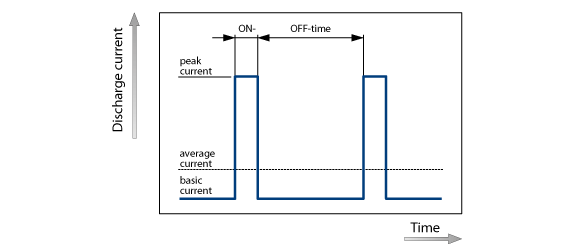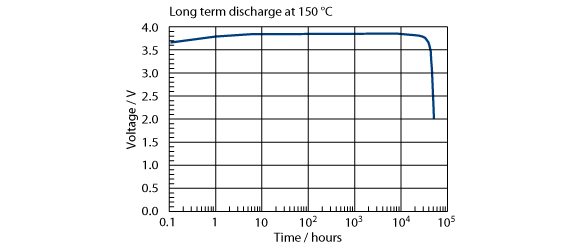
| DE | EN | Contact | About us | Terms of Business | Imprint | Privacy & Cookies | Help | Newsletter | Registration | Login | |
 |  |  |  |  |  |  |  |  |  |  |  |
| Home > News > Case Studies > Power Supplies > What advantages do lithium thionyl chloride batteries offer? | |||||||||||
What advantages do lithium thionyl chloride batteries offer?Schukat explains Tadiran’s LTC battery system
Tadiran’s LTC batteries are designed for long-term use in applications that place high demands on reliability, space, and energy content and are used in new-generation microelectronic devices: lithium thionyl chloride batteries. How is voltage related to capacity?The voltage generally remains constant during discharge. A slight drop in voltage may occur when discharging with medium currents. If discharge is interrupted, the voltage returns to the original value. This means that practically 100% of the battery’s available capacity can be used at a voltage level well above 3V. ► About pulse discharge:The duty cycle (ratio of on time to off time) generally ranges from 1:10 to 1:10,000. This value influences the available capacity. If it is large (1:10), the available capacity corresponding to the amplitude of the pulse current is almost reached; if it is small (1:10,000), available capacity increases and approaches the value corresponding to the average current.
What needs to be considered during storage and operation?During storage, Tadiran SL-300 series LTC batteries experience capacity loss of less than 0.5% per year; SL-700 series batteries lose 2% per year. Self-discharge while discharging is dependent on the discharge current, and amounts to 2-4% per year for an operational life of ten years. ► Long-term UPS operation:The rated operating temperature range for most Tadiran lithium thionyl chloride batteries is -40 to +85°C. In long-term operation at high temperatures in particular, the lithium batteries are exceptionally powerful: Discharging ten SL-550 (½AA) batteries at a constant temperature of 150°C and with a 560kΩ load, the batteries functioned for more than 5 years, reaching 65 per cent of their rated capacity.
Where are LTC batteries used?The batteries are designed for long-term applications that place high demands on reliability, space and energy content, as well as in extreme environmental conditions. They are used, for example, in CMOS memories, consumption meters, automotive systems, alarm and security systems, medical devices, industrial automation, and the Internet of Things (IoT). At SchukatAt Schukat electronic, we offer the lithium thionyl chloride batteries from European manufacturer Tadiran. The company produces its batteries in two distinct formats: the cylindrical bobbin version, and as flat cells. They are available in a range of sizes from ½AA to DD. Diverse connection types are available and they can be permanently installed in a circuit. |
|


